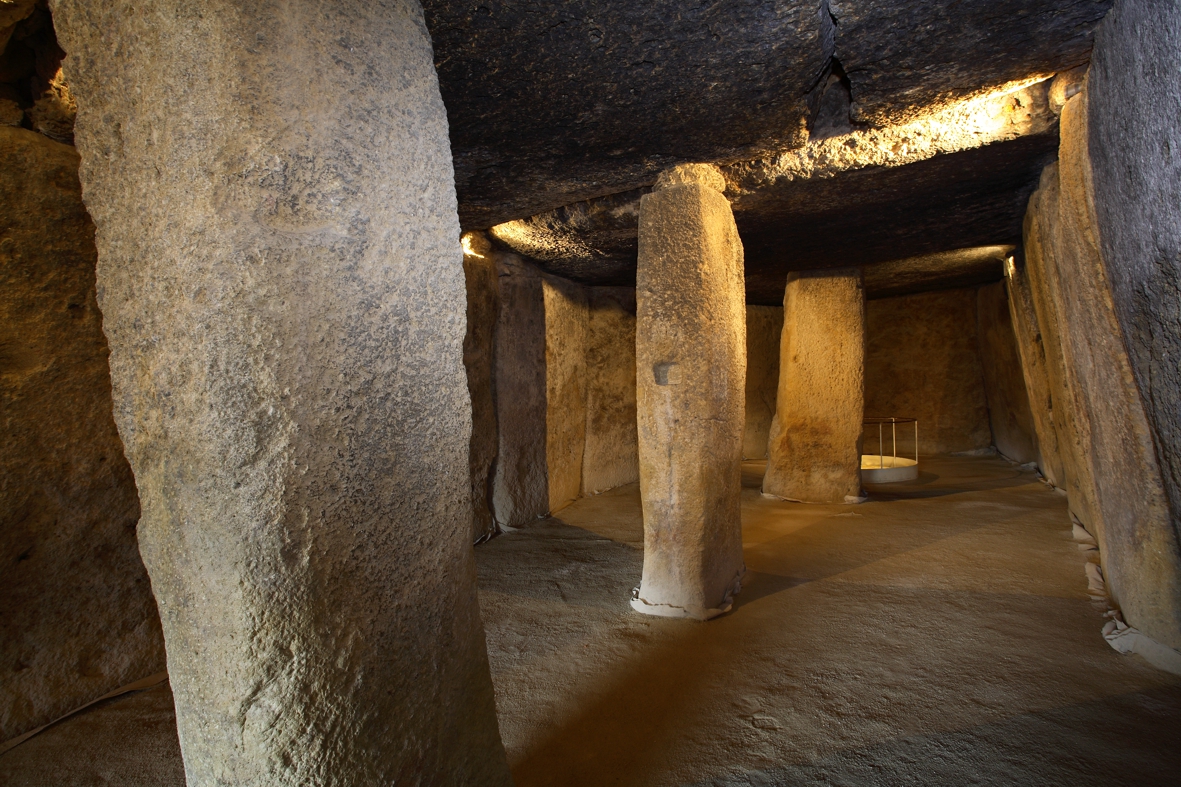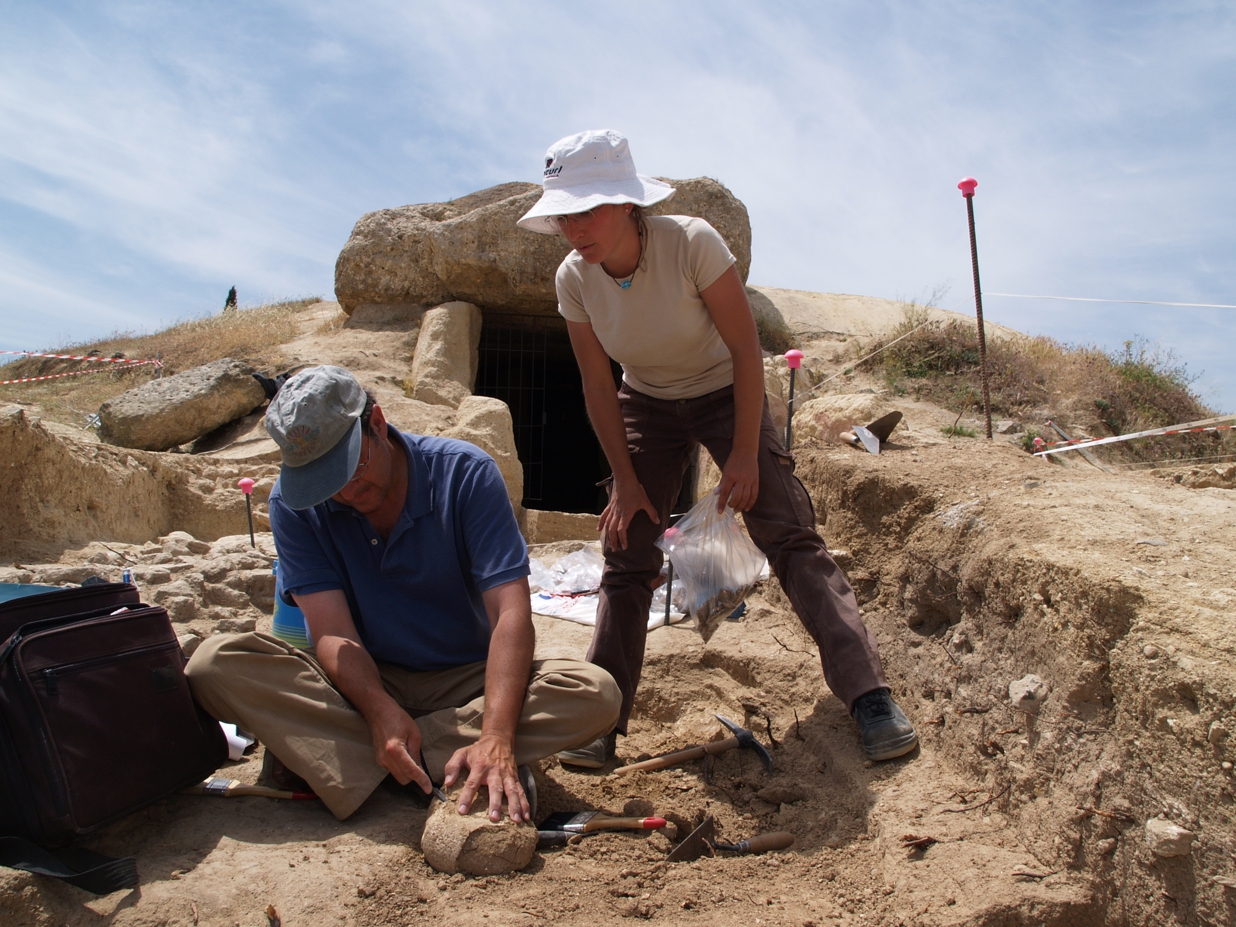Outstanding Biographies: The Forgotten Lives of Prehistoric Monuments in Europe
Next Friday, 6 September 2013, we will be running a very special session at the 19th Annual Meeting of the EAA in Pilsen (Czech Republic), a session dedicated to the lives of prehistoric monuments in Iron Age, Roman and Medieval Europe. Leading scholars in the field will be gathered to present the outstanding biographies of some megalithic monuments, stelae, statue-menhirs and rock art sites in various European and Mediterranean regions. These monuments include Jelling (Denmark), Tara (Ireland), Avebury (United Kingdom), the statue-menhirs of Guernsey, the standing stones and megalithic monuments of Brittany (France), the dolmens of Santa Cruz and Menga (Spain), and the rock art sites of Valcamonica (Italy). At least three of these sites (Jelling, Tara and Santa Cruz), thought built in the Neolithic period, were later used for the coronation of local kings in the first millennium AD.
If you are attending the meeting, come to our session! You will find the details below.


When and where:
Friday, 6 September 2013, 08:30–13:00, Session A29 – Room: EU 108 (Building 1, ground floor)
Session title:
Outstanding Biographies: The Life of Prehistoric Monuments in Iron Age, Roman and Medieval Europe
Organisers:
Marta Díaz-Guardamino (University of Southampton, UK), Leonardo García Sanjuán (University of Seville, Spain) and David Wheatley (University of Southampton, UK)
Session abstract:
Some Prehistoric stone monuments accrued complex life-histories that spanned over millennia. Their ‘aura’ and material properties, namely, their large scale and durability, fostered their involvement in complex historical settings in which competing ‘world views’, cultural traditions and identities transformed them in places of special significance. In these contexts, prehistoric monuments have played active roles in the institutionalization, contestation and negotiation of memories, ideologies, values and power relations. This session seeks to explore the role of prehistoric monuments in these processes of cultural and social production (i.e. hybridization, resistance, assimilation) through the adoption of a biographical approach. In particular, through the examination of the biographies of selected paradigmatic megalithic monuments, stelae and statue-menhirs, and Rock Art sites in various regions of Europe, this session will be aimed at examining the role played by some prehistoric monuments in the unfolding of the complex social processes that lie behind traditional concepts such as ‘Orientalization’, ‘Romanization’ or ‘Christianisation’.
Session programme:
08:30–08:50
A29.01: Kings’ Jelling
by Steen Hvaas (Danish Agency for Culture, Denmark)
08:50–09:10
A29.02: Icons of Antiquity: Remaking Megalithic Monuments in Ireland
by Gabriel Cooney (University College Dublin, Ireland)
09:10–09:30
A29.03: The Outstanding Biography of Eliseg
by Howard Williams (University of Chester, UK)
09:30–09:50
A29.04: The myth of the “real” Avebury
by David Wheatley (University of Southampton, UK)
09:50–10:10
A29.05: Les Pierres de Memoire: the Life-history of Statue-menhirs in Guernsey
by Heather Sebire (English Heritage, UK)
10:10–10:30
A29.06: Back and forward: Neolithic standing stones and Iron Age «stelae» in French Brittany
by Luc Laporte (CNRS, France), Marie-Yvane Daire (CNRS, France), Elias Lopez-Romero (University of Durham, UK), Gwenolé Kerdivel (University of Nantes, France)
10:30–11:00
Coffee break
11:00–11:20
A29.07: From a Neolithic center of power to the dawning site of a kingdom of the Early Middle Ages (737 AD): the case of the dolmen of Capilla de Santa Cruz (Asturias, Spain)
by Miguel Ángel de Blas Cortina (University of Oviedo, Spain)
11:20–11:40
A29.08: Outstanding biographies in southern Iberia: Exploring the life of some Prehistoric monuments in the First Millennium AD
by Leonardo García Sanjuán (University of Sevilla, Spain)
11:40–12:00
A29.09: Signs of their Times: The Life of Prehistoric Stelae and Statue-Menhirs in Iron Age, Roman and Medieval Iberia
by Marta Díaz-Guardamino (University of Southampton, UK)
12:00–12:20
A29.10: Understanding past people’s images of the past through their manipulation of prehistoric monuments
by Estella Weiss-Krejci (Austrian Academy of Sciences, Austria)
12:20–12:40
A29.11: Life and death of Copper Age monoliths at Ossimo Anvòia (Val Camonica, Italian Central Alps), 3000 BC–AD 1950
by Francesco Fedele (University of Naples ‘Federico II’ (1980–2011, retired), Italy)
12:40–13:00
A29.12: What happens when tombs die? The historic afterlife of the Cretan Bronze Age tombs.
by Borja Legarra Herrero (University College London, UK)
